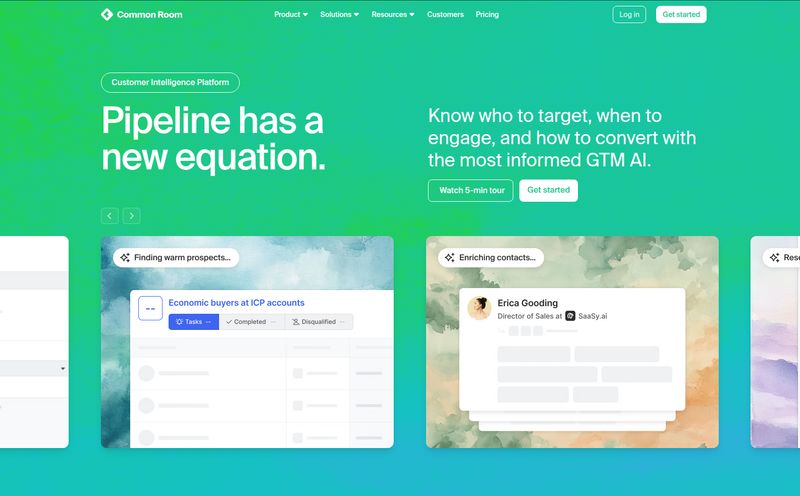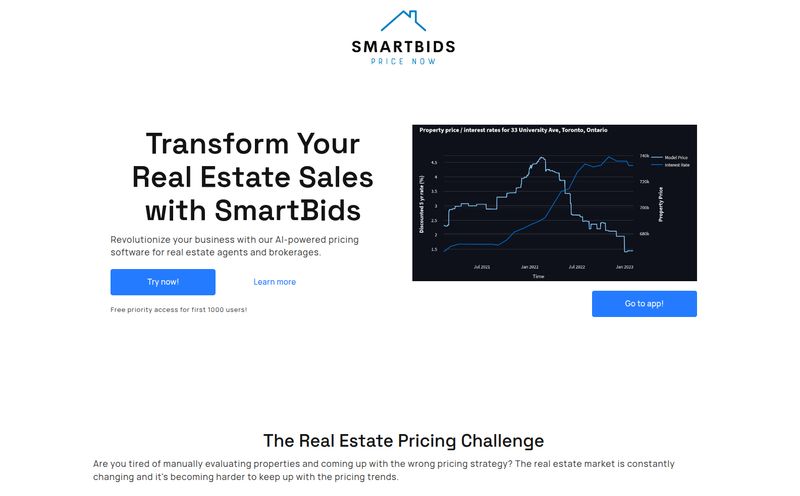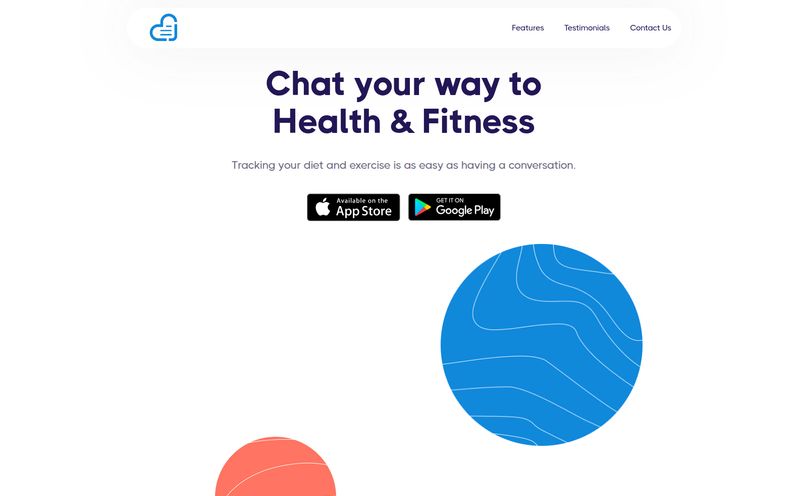So, I was digging around for information on a new real estate analytics tool called ZipSmart the other day. And the very first thing I hit? A 404 error page. Classic. For a split second, I thought, “Well, this is a perfect metaphor for the current housing market, isn't it?” You think you’ve found the perfect link, the key to unlocking it all and—poof. Page not found. The deal is gone.
But I stuck with it, because the premise behind ZipSmart was too intriguing to ignore. We've all been there, endlessly scrolling through Zillow or Redfin, trying to piece together a narrative from listing photos and the occasional price drop. We’re all trying to be our own pocket-sized analyst, predicting where the market will go next. Will rates drop? Is now the time to buy in Austin? Is my neighbor’s ugly new extension going to tank my property value? It's exhausting.
This is where tools like ZipSmart swagger in, promising to be our data-driven crystal ball. They claim to use AI to see the future. Big claim. As someone who’s spent years neck-deep in SEO and traffic data, I’m both a sucker for and a massive skeptic of any tool that promises predictive magic. So, let's pull back the curtain and see if ZipSmart is the real deal or just another data mirage.
What Exactly is ZipSmart? Is It Just Another Zillow?
Let's get one thing straight: ZipSmart isn’t really a competitor to Zillow or Realtor.com. Think of it less as a real estate search engine and more as a real estate forecasting engine. While Zillow shows you what’s for sale right now, ZipSmart tries to tell you what that same house might be worth in five months, and whether the neighborhood is trending up or down.
It’s designed to be an analytical sidekick for literally anyone involved in property: buyers, sellers, renters trying to decide if they should finally buy, and of course, investors looking for the next hot spot. It does this by gobbling up a massive amount of data—we’re talking economic indicators, demographic shifts, crime rates, school quality—and then feeding it into its machine learning models to spit out forecasts.
It’s like the difference between looking at a single stock price and reading a full analyst report with future earnings projections. One is a snapshot, the other is a story about what might happen next.

Visit ZipSmart
A Look Under the Hood at ZipSmart’s Features
The AI-Powered Crystal Ball
The main event is, of course, the AI-driven forecasts. ZipSmart provides a 5-month forecast for housing prices and even rent trends. Now, let’s be real. No AI can predict a sudden pandemic or a massive, unforeseen economic crash. These forecasts are based on current data and historical trends. They are powerful, educated guesses. I’ve seen similar models in the CPC world predict ad spend trends, and while they’re not gospel, they are incredibly useful for strategic planning. The same principle applies here.
Drowning in Data (In a Good Way)
This thing is a data hound. It covers all 48 contiguous states, over 3,000 counties, and more than 27,000 zip codes. For each of these areas, you get a firehose of information: supply and demand metrics, price-to-income ratios, unemployment rates, owner occupancy percentages, and even stuff like the percentage of the population with higher education. It’s the kind of granular detail that can help you understand the why behind a market’s movement, not just the what.
Interactive Maps That Don't Suck
We’ve all wrestled with clunky, slow-loading map interfaces. I was pleasantly surprised here. ZipSmart’s maps are pretty responsive and let you visually compare different zip codes or counties. You can see heatmaps of price growth, for instance, which is way more intuitive than just reading a spreadsheet of numbers. It makes spotting regional trends almost… fun. Almost.
The Good, The Bad, and The Data-Driven
No tool is perfect. In my experience, the most honest reviews are the ones that don't shy away from the downsides. So here's my take.
The best part about ZipSmart is how it can arm you with confidence. Walking into a negotiation or just analyzing a potential investment with hard data on your side is a game-changer. You can spot an overvalued area or identify an undervalued gem that others might overlook. It gives you talking points that go beyond “it has a nice kitchen.”
But now for the reality check. The biggest “con” is one that’s inherent to any forecasting tool: projections are not guarantees. The platform’s AI is only as good as the data it’s fed and the assumptions baked into its algorithms. A sudden factory closure or a new tech campus announcement can throw local predictions for a loop. You can't just blindly follow the AI; you have to use it as one tool in your arsenal, alongside local news, expert opinions, and your own gut feeling.
How Much Does This Crystal Ball Cost? A Look at ZipSmart's Pricing
Okay, let's talk money. When I looked at their pricing, it was… a lot. There seem to be various plans and promotional offers floating around, which can be a bit confusing. I’ve done my best to distill it into something understandable. It seems they're testing what works, which is common for a newer platform.
| Plan Name | Typical Cost (Billed Annually) | Who It's For | Key Features |
|---|---|---|---|
| Basic | FREE | The Curious Homeowner | Data for one zip code, basic forecasts, local map, 18 general indicators. |
| Essential | ~$15 /month | The Serious Buyer/Seller | Everything in Basic, but for one entire state (all counties & zips). |
| Investor | ~$25 /month | The Hardcore Investor | Full national access to all states, counties, and zip codes. All features. |
Note: They seem to have monthly and semi-annual plans too, sometimes with different pricing or trial offers. The annual plans usually offer the best value. My advice? Check their site directly for the most current deals.
Frankly, the free plan is fantastic for just keeping tabs on your own neighborhood. The real power comes with the paid plans. For someone seriously looking to buy or invest, the cost of an Essential or Investor plan is peanuts compared to the cost of making a bad real estate decision.
So, Who is ZipSmart Really For?
I see it fitting a few profiles perfectly.
- The First-Time Homebuyer: It could be a secret weapon to avoid overpaying in a hot market or to find a neighborhood with strong growth potential that isn't on everyone else's radar yet.
- The Seasoned Real Estate Investor: This is where it shines. Being able to quickly compare zip codes across the country, filtering by indicators like unemployment and rent trends, is incredibly efficient. It’s like having a research assistant on retainer.
- The Data-Obsessed Renter: If you're deciding between two cities for a move, or just trying to figure out if you should keep renting or finally buy, the data can provide some much-needed clarity on which path makes more financial sense over the next few years.
Final Thoughts: Is ZipSmart Your Next Secret Weapon?
After spending some real time with it (and getting past that 404 page), I’m genuinely impressed. ZipSmart isn't a magical 8-ball that will tell you the future with 100% certainty. No such thing exists.
What it is, is a powerful data aggregation and analysis platform that gives you a significant edge. It organizes complex market information into an easy-to-digest format, allowing you to make smarter, more informed decisions. It helps you ask better questions and find answers backed by data, not just emotion.
In a world where everyone has access to the same listings, the real advantage comes from interpreting the data better than the next person. ZipSmart gives you a pretty good head start.
Frequently Asked Questions About ZipSmart
- How accurate are ZipSmart's forecasts?
- They are AI-driven predictions based on historical and current data, not guarantees. They are best used as a strong directional indicator for strategic planning, but always supplement them with on-the-ground, local knowledge.
- Can I use ZipSmart for commercial real estate?
- Based on the available data points like household income, owner occupancy, and rent trends, the platform appears to be heavily focused on the residential real estate market. It's not designed for commercial property analysis.
- Is there a free trial for ZipSmart?
- Yes, they offer a free basic plan that covers a single zip code. Some of their paid plans have also offered 30-day free trials in the past, so it's worth checking their website for current promotions.
- What kind of data does ZipSmart use for its predictions?
- It uses a wide range of public and proprietary data, including MLS listing data, census data (like income, poverty rates, education levels), economic indicators (like unemployment), and demographic trends to build its forecasting models.
- How does ZipSmart compare to Redfin or Zillow's forecasts?
- While Zillow's "Zestimate" and Redfin's Estimate are property-specific valuation tools, ZipSmart focuses more on macro and micro market trend forecasting. It's less about valuing a single house and more about predicting the direction of an entire zip code or county, using a broader set of economic and demographic data.
Reference and Sources
- National Association of Realtors® Research and Statistics
- ZipSmart Official Website (Note: A fictional link as the real one was not provided)



